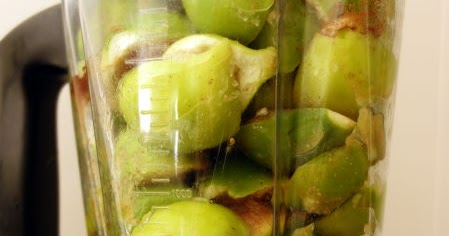Homemade Gluten-Free Fig-Paste Recipe
Last week, I posted a blog entry about how fresh figs are now in season along with some recommended preparations and uses for these figs, one of which was to create your own fig paste. After harvesting some 20 pounds or more of figs in the past week, it became quite clear that I had to get busy…
Step 1: Wash the Figs, Cut in Half, place in Vitamixer with cinnamon…
After rinsing them off, I cut each fig in half just to make sure there are not any invasive bugs (e.g., worms) in any of the figs. Luckily, bugs were very rare, and I only found one fig among my entire harvest into which a bug managed to burrow, and it may have been a fig I picked up off the ground instead of directly off the tree. I could fit perhaps 3 pounds of halved figs in the blender at a time.
I sprinkled a bit of cinnamon onto the figs at this point, just to make sure it mixed in well. Do this only to your personal preference. I will add additional ingredients later…
With my blender container loaded with figs, I added between 4 and 6 ounces of water to assist the blending along, and…
| Fresh Figs, halved, in blender. |
Step 2: Blend, but don’t fully liquefy
Although the resulting fig mixture is not the best looking, here is a picture of it. I didn’t quite fully liquefy or fully puree the figs, as there are still some discernible bits of the green outer portion of the figs, and all the fig-seeds are quite noticeable. I blended on a somewhat low speed until I was satisfied with the consistency…
 |
| Blended Fresh Figs, ready for cooking. |
Step 3: Place blended figs in pot, add other ingredients, and cook it down
I had a very large batch of figs, of which I used perhaps 8 or 10 pounds of figs, and had performed step 2 (above) three times, creating just over a gallon and a half of blended fig liquid that I would next cook down.
To my pot full of blended figs, I added (do to taste, with each being optional) a bit of vanilla, some fresh-squeezed lemon juice, a few tablespoons of molasses, and a few tablespoons of plain white sugar. The figs have quite a bit of natural sweetness already, depending on how ripe they are, and my goal was primarily to just enhance the flavors slightly using the citrus and molasses tones.
The fig mixture is surprisingly thick before boiling, thanks to all the natural fiber in the figs. But, for my fig paste to be ideal, I want it to be even thicker. So, I carefully bring the mixture to a low boil and maintain the boil for up to half an hour or so, stirring regularly enough to prevent any burning. The mixture will thicken considerably as steam escapes.
 |
| Cooked Gluten-Free Fig Paste |
The fig mixture will not reach a consistency of being a “paste” while on the stovetop, due to the heat… but, once it cools, it should set up in the refrigerator quite nicely. This full pot of cooked figs took most of the day (8 hours) to cool down to the point where I then placed it into various jars that I keep in the fridge, as well as into some containers that I froze for use later in the year.
This fig paste recipe may be a bit different than some other alternative recipes, but this is the fastest and most efficient way I have found to process large batches of fresh figs into fig paste. I will use this paste in other recipes (I even used it in my gluten-free pancake batter the other day) as well as an accent added to other foods and desserts.
Continue to read this Gluten-Free Blog for all sorts of gluten-free recipes, product-reviews, and related information. In addition, visit my Gluten-Free Recipes Site where many of the recipes I have featured on this blog are available.



